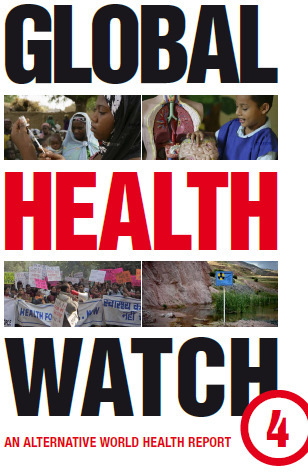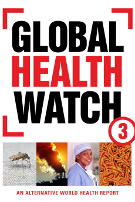Pandemic influenza preparedness: sharing of influenza viruses and access to vaccines and other benefits
WHO has long been working on “pandemic influenza preparedness” (PIP) through it’s Global Influenza Surveillance Network (GISN) established in 1952. The Network was set up to monitor the evolution of influenza viruses, to provide recommendations on diagnostics and treatment and to serve as a global alert mechanism. It currently consists of six WHO Collaborating Centres (in Australia, Japan, UK, China and USx2), four WHO Essential Regulatory Laboratories (in Australia, Japan, UK and US) and 138 National Influenza Centres in 108 WHO Member States. Countries with diagnosed flu cases are expected to provide virus samples to the WHO Network for vaccine development.
World attention was focused on this issue in early 2007 when the then Indonesian Health Minister publicly announced that her country would no longer provide avian flu viruses to the WHO network, as the way of working was said to be unfair to the interests and needs of developing countries. The Indonesian government discovered that avian flu viral material that it had voluntarily submitted to the GISN ended up in the hands of pharmaceutical companies for vaccine development without its permission. This was contrary to WHO guidelines, which stated that "there shall be no further distribution of viruses/specimens outside the network of WHO Reference Laboratories without the permission from the originating country/laboratory". When the WHO was taken to task about the breach of its own guidelines, they were removed from the WHO website. WHO then proposed a new document describing "best practices for sharing influenza viruses and sequence data". One of the suggested practices is that "the WHO CC/H5 Reference Laboratories should provide candidate influenza vaccine strains to any requesting vaccine producer to develop vaccines". This runs contrary to the previous guidelines and to the international Convention on Biological Diversity (CBD), which holds that countries have national sovereignty over their biological resources. It is for the States to determine if there is to be access to such resources by foreigners, and the conditions for such access including prior informed consent and benefit sharing (see in particular Art 15 en 16(1) of the Convention).
In addition to the above issue, developing countries face other problems related to pandemic influenza preparedness. The vaccines developed by pharmaceutical companies are mostly unaffordable to developing countries, although they carry the highest burden of flu cases. Moreover, developed countries frequently enter into advance purchase agreements with pharmaceutical companies to have vaccines delivered to them in the event of a pandemic. As there is only a limited amount that these companies can produce in a year, stockpiling of vaccines by developed countries makes them unavailable to affected developing countries in times of a pandemic when demand will exceed the supply of vaccines.
In sum, there is a huge inequity in the global influenza response system, where developing countries provide virus samples for a global surveillance system, but do not have access to the benefits arising from it. Developed countries push for virus sharing under the argument of global health security. Indonesia was even accused of violating the International Health Regulations although these do not expressly require the sharing of biological samples. There is clearly an asymmetry in the global system for pandemic influenza alert and response, which asserts a global need for surveillance, information exchanges, and virus sharing (essential 'global public good' to be made available via enforceabe international regimes), but accepts a demand-based allocation of key elements of pandemic response (such as vaccines, antivirals, and protective equipment), with all the inequities that this entails.
These issues were raised by Indonesia, together with the support of more than twenty other developing countries, at the 60th WHA in May 2007, culminating in resolution WHA60.28 titled “Pandemic Influenza Preparedness: sharing of influenza viruses and access to vaccines and other benefits”. The resolution recognises the sovereign right of states over their biological resources and the right to fair and equitable sharing of benefits arising from the use of the viruses. It sets out a series of proposals to achieve both ‘the timely sharing of viruses and specimens’ and the promotion of ‘transparent, fair and equitable sharing of the benefits arising from the generation of information, diagnostics, medicines, vaccines and other technologies’. The Health Assembly requested the Director-General to convene an intergovernmental meeting to consider frameworks and mechanisms to strengthen the timely sharing of influenza viruses and the equitable access to benefits.
Over the course of several sessions, the Intergovernmental Meeting drafted and negotiated a Pandemic Influenza Preparedness Framework for the Sharing of Influenza Viruses and Access to Vaccines and Other Benefits. Although consensus was reached on most of the provisions in the Framework, several significant areas remained unresolved when the Intergovernmental Meeting concluded its work and submitted its outcome document to the Director-General for transmission to the Sixty-second World Health Assembly in May 2009. The Health Assembly requested additional consultations to finalize the Framework, but during a two-day consultation Member States were unable to reach consensus. At the 126th EB in 2010, they decided to establish an open-ended working group (OEWG) to reach agreement on the remaining elements.
The main issue of disagreement was the proposal for a Standard Material Transfer Agreement (SMTA) and its provisions on benefit sharing and intellectual property rights. Many of the developing countries and civil society organisations were pushing for a standard agreement with mandatory concrete benefit sharing and no intellectual property rights over the biological materials contributed to WHO, as well as over the products developed using such biological materials. Other countries however, advocated for benefit sharing to be voluntary. The middle gound suggested by the Director-General was to "maintain the necessity to contribute to the system while allowing individual influenza vaccine manufacturers to select the specific contribution they wanted to make" (EB126/4). On intellectual property; some Member States maintained that IP rights should not be sought by entities within the GISN, while others argued that IP rights should be allowed and encouraged as an important incentive for innovation. For the PHM position, see our submission to the OEWG, and our comment on the proposed Framework and SMTA.
The Open-Ended Working Group presented it's final report to the 64th WHA through the 128th EB. See the PHM letter to EB members on this issue and our reports on the EB and the WHA for a summary and analysis of the discussions and our statement to the Assembly. The 64th World Health Assembly finally adopted the PIP Framework, as prepared by the Working Group, in resolution WHA64.5. With the new Framework in place, the Global Influenza Surveillance Network (GISN) was renamed as the Global Influenza Surveillance and Response System (GISRS). The Framework asked for the establishment of an independent Advisory Group (Section 7 of the Framework), to provide evidence-based reporting, assessment and recommendations regarding its functioning.
Annexed to the Framework were two Standard Material Transfer Agreements, SMTA 1 and SMTA 2. The first one to be used when sharing PIP biological materials within the WHO GISRS, the second when the WHO GISRS shares biological materials with entities outside the GISRS. The final consensus reached on benefit-sharing as reflected in the documents was a compromise between mandatory and voluntary sharing of benefits: entities outside the WHO GISRS that gain access to biological materials will have to commit to annual monetary contributions (par 6.14.3 of the Framework) as well as to commit to certain benefits from a list of benefit-sharing options listed in SMTA 2. The list of benefit-sharing options gives companies the opportunity to choose between the donation of vaccines or antivirals and different forms of IP licensing instead of having all of these as stand-alone mandatory actions.
The first report of the Advisory Group was presented to the 65th World Health Assembly through the 130th EB. See our reports on the EB and the WHA for a summary and analysis of the discussions and our statement to the Assembly. The main issues discussed were: the implementation of the Framework (or the lack thereof), the use of SMTA, transfer of know-how and technology to developing countries and partnership with industry.
Useful background material:
- Global Health Watch 2 - D1.2 (p 232-234) “The avian flu vaccine controversy"
- Global Health Watch 3 - B8 "Pandemic Influenza Preparedness: in search of a global health ethos"
- Briefing note prepared by Third World Network prior to EB128th Jan 2011
- TWN papers on Avian Flu
- WHO Pandemic Influenza Preparedness Framework for the Sharing of Influenza Viruses and Access to Vaccines and Other Benefits, and its annexes SMTA 1 and SMTA 2
- WHO Global Pandemic Influenza Action Plan to Increase Vaccine Supply
Events:
EB128th Jan 2011, WHA64th May 2011, EB130th Jan 2012 and WHA65th May 2012




